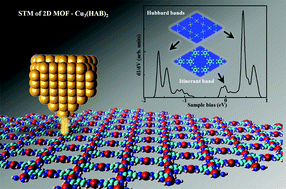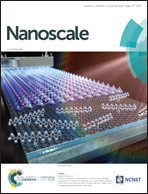Dichotomy between frustrated local spins and conjugated electrons in a two-dimensional metal–organic framework†
Abstract
Dichotomy between local spins and conjugated electrons spawns various exotic physical phenomena, however, it has mostly been reported in three-dimensional (3D) inorganic systems. We show, for the first time, that a rare 2D metal–organic framework exhibits intriguing dichotomy behavior, which can be directly identified through scanning tunneling microscopy/spectroscopy (STM/STS). In a newly synthesized Cu-hexaiminobenzene [Cu3(HAB)2], on the one hand, the Cu2+ ions form an ideal S − 1/2 antiferromagnetic (AFM) kagome lattice; on the other hand, the conjugated-electrons from the organic ligands produce a frustrated πx,y model on a honeycomb lattice, giving rise to completely dispersionless energy bands around the Fermi level that favour the ferromagnetic (FM) state. Remarkably, the frustrated local spins and conjugated electrons interact through a strong FM Hund's coupling, giving rise to a wide range of intriguing quantum phases. Furthermore, we propose that this dichotomy can be directly characterized through STM/STS measurements due to its special 2D nature, which provides a unique exciting platform to investigate the dichotomy of frustrated spins and electrons in a single lattice.



 Please wait while we load your content...
Please wait while we load your content...